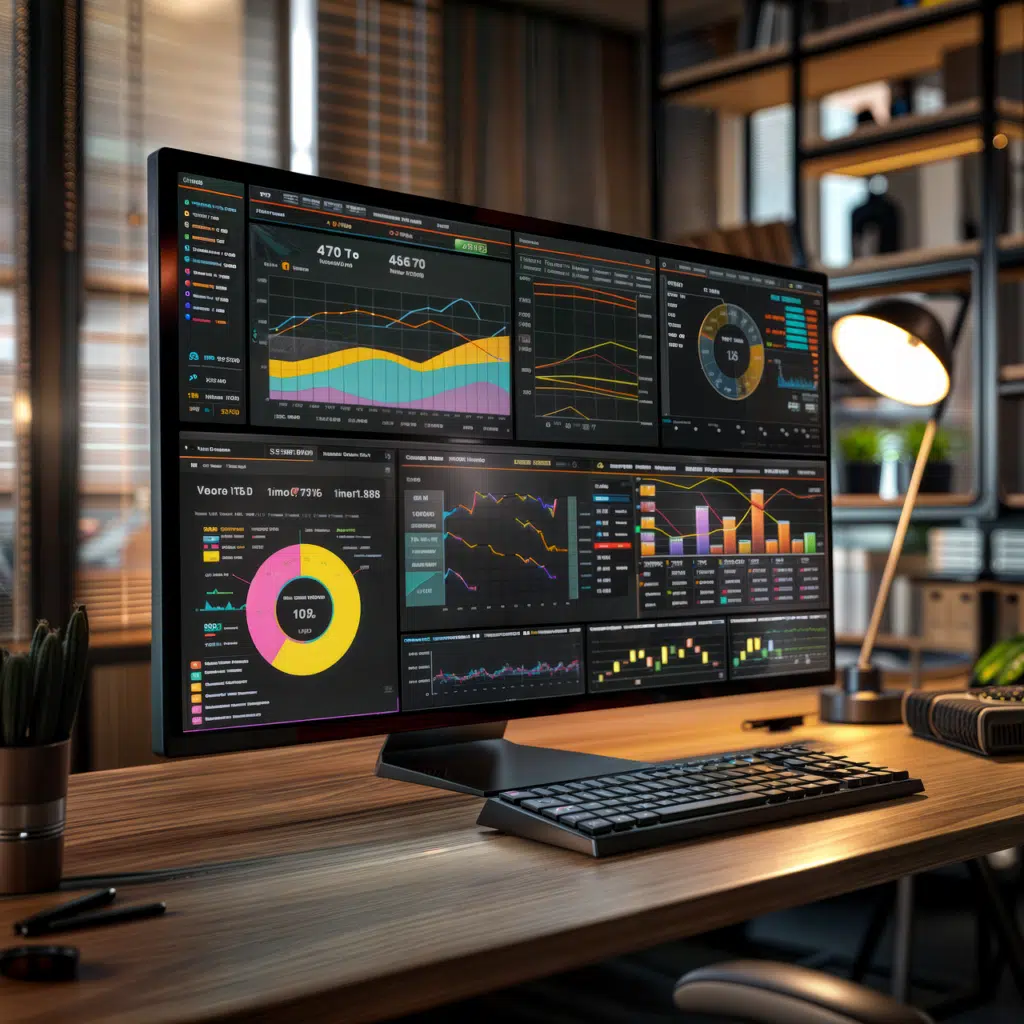Project tracking is the backbone of successful project management. Without it, projects can quickly spiral into chaos, leaving teams scrambling to meet deadlines and budgets. This guide will explain everything about the process, from basic principles to helpful tools. It helps both new and experienced project managers effectively monitor progress and achieve long-term project management success.
What is project tracking?
Project tracking is the process of continuous monitoring and reporting on the progress of a project. It involves keeping an eye on tasks, timelines, budgets, and resources to ensure everything is on track. Consider it as the GPS for your project—without it, you’re essentially operating without direction.
At its core, project tracking helps you answer essential questions: Are tasks completed on time? Is the project adhering to the allocated budget? Are resources used effectively? By tracking these elements, you can identify potential issues early and adjust them before they become major problems.
Why is project tracking important?
Even well-planned projects can be disrupted by unexpected delays, budget issues, or resource problems. Project tracking, a key part of effective project management, lets you monitor progress and maintain control.
Here’s why project tracking matters
- Visibility: You can see exactly where your project stands at any given moment.
- Accountability: Team members know what’s expected of them and when.
- Decision-making: Real-time data helps you make informed decisions quickly.
- Risk management: You can spot potential risks early and act to mitigate them.
Without project tracking, you’re essentially flying blind—and no one wants to be the person who says, “I didn’t see that coming.”

Key elements of project tracking
Project tracking isn’t just about checking off tasks. This comprehensive process involves several key elements crucial to effective project management :
1. Task Management
Tasks are the building blocks of any project, forming the foundation of effective project planning. Tracking their progress ensures tasks are finished on time and in the correct order, helping you meet your business goals and objectives.
Tools like Gantt charts and Kanban boards help visualize tasks and dependencies, enabling continuous improvement and monitoring to keep projects on track.
2. Time Tracking
Time is money, especially in service-based industries. Tracking time spent on tasks helps maintain schedules and budgets while providing insights into team productivity. This data collection is crucial for high-level decision-making and ensuring resources are used efficiently to meet long-term goals.
3. Progress Monitoring
This involves comparing actual progress to your project plan. Are you progressing faster than planned, meeting deadlines, or experiencing delays? Progress monitoring helps answer this question and allows corrective actions. It’s a key part of agile project management, ensuring marketing campaigns or other initiatives stay aligned with business objectives.
4. Resource Allocation
Resources, such as people, tools, or materials, are limited and must be managed carefully. Managers track their usage to allocate them efficiently, prevent overworking, and ensure alignment with business goals. This process is vital for maintaining productivity and achieving long-term success.
5. Reporting and Analysis
Regular status reports keep stakeholders informed and provide a clear picture of the project’s health. Dashboards and visual tools simplify data collection. They make it easier to share insights on website traffic, marketing team performance, or other metrics. Regular reviews of this data support continuous improvement and help identify potential issues early.
The role of KPIs in project tracking
Key Performance Indicators (KPIs) are the agency metrics that matter most to your project. They help you measure success and identify areas for improvement.
- Common project tracking KPIs include:
Task completion rate: Are deliverables being finished within the set deadlines? - Budget Variance: Are you staying within budget
- Resource use: Are resources being used effectively?
- Milestone Achievement: Are you hitting key milestones as planned?
By tracking these KPIs, you can ensure that your project stays on track and delivers the desired results.
Real-time monitoring: The game-changer
Real-time monitoring is what sets modern project tracking apart from traditional methods. Instead of using old spreadsheets or manual updates, real-time monitoring lets you instantly access the most up-to-date project information.
Why does this represent a significant shift?
- Instant updates: No more waiting for weekly status reports. You can see progress as it happens.
- Faster decision-making: Real-time data allows you to address issues immediately.
- Improved collaboration: Everyone has access to the same information, reducing lack of clarity and confusion.
Furious Squad’s provide effective project tracking tools that take real-time monitoring to the next level. It also offers features like live dashboards, automated alerts, and seamless integrations.
Choosing the right project tracking tools
Not all project tracking tools are created equal. The right tool for you will depend on your specific needs, but here are some must-have features to look for:
- Real-time data: Live updates ensure you’re always working with the latest information.
- Adjustable dashboards: Tailor your view to focus on the metrics that matter most.
- Collaboration features: Tools like chat, file sharing, and task comments keep everyone on the same page.
- Reporting capabilities: Generate detailed reports with just a few clicks.
- Integration options: Seamless integration with other tools (like CRM or accounting software) saves time and reduces errors.
Furious Squad’s project tracking software meets all these requirements, making it an excellent choice for agencies and service-based businesses.
Best practices for effective project tracking
Here are some tips to improve your project tracking, along with extra insights to help you manage your projects more effectively:
- Establish clear objectives: Determine what achieving success means for your project. Clear, measurable goals make it easier to track progress and stay focused. Break down larger objectives into smaller, actionable tasks to ensure clarity and alignment across the team.
- Use the right tools: Invest in a project tracking tool that meets your needs. Spreadsheets might work for small projects, but they’re no match for the complexity of larger ones. Some project tracking tools offer features such as real-time monitoring, task management, and reporting dashboards to streamline your workflow.
- Communicate regularly: Keep your team and stakeholders informed with regular updates. Transparency builds trust and ensures everyone is aligned. Schedule weekly check-ins, share progress reports, and use collaboration platforms to maintain open lines of communication.
- Monitor KPIs: To effectively manage your project, track important metrics like how quickly tasks are finished, if you’re staying within budget, and how resources are being used. Use these KPIs to guide your decisions and keep your project on track. Regularly review and adjust your KPIs to reflect changing project priorities.
- Take initiative to address potential problems before they occur. Use real-time monitoring to identify potential issues early and act before they escalate. Implement risk management strategies and contingency plans to address challenges swiftly and keep your project moving forward.

How can Furious Squad help with project tracking?
Furious Squad’s project tracking software is designed to simplify and streamline the process. With features like real-time monitoring, customizable dashboards, and seamless integrations, it’s the ultimate tool for service-based companies and agencies.
Here’s what sets Furious Squad apart:
- Comprehensive platform: Eliminate the need to switch between multiple tools. Furious Squad centralizes everything you need on one platform.
- Real-time insights: Get instant visibility into project progress, resource allocation, and more.
- User-friendly interface: Designed for ease of use, so you can focus on managing your projects—not learning new software.
Whether you’re tracking tasks, monitoring KPIs, or generating reports, Furious Squad makes it easy to stay on top of your projects.
Project tracking is essential for keeping your projects on schedule, within budget, and aligned with your goals. By using the best practices in this guide and the right tools, you can reduce stress in project management and focus on achieving results.
Ready to take your project tracking to the next level? Check out Furious Squad’s project tracking software and see how it can transform the way you manage your projects.